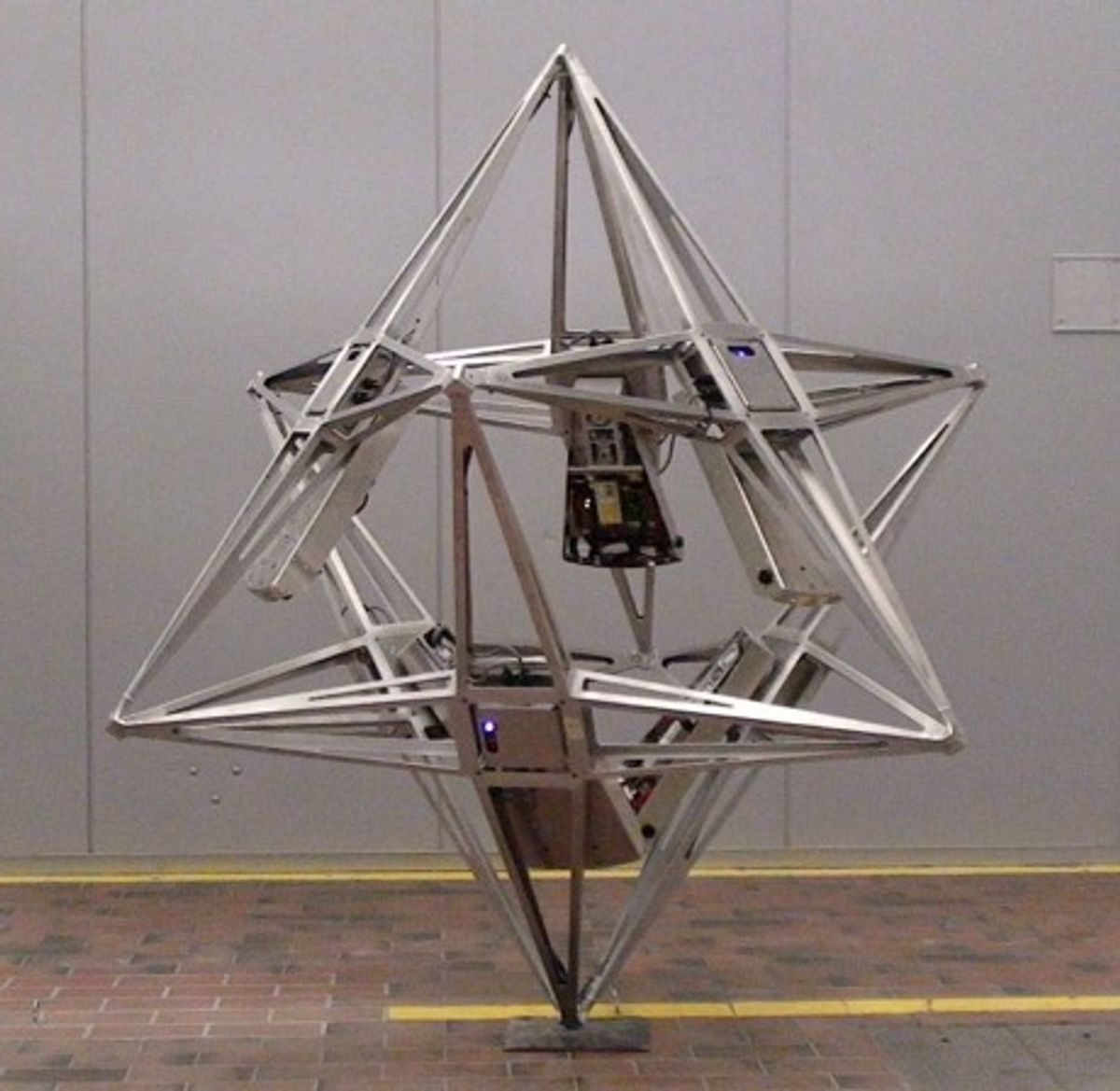Is it a sculpture? Is it a robot? The Balancing Cube is both.
The Balancing Cube is a robotic sculpture that can stand on any of its corners. Pendulum-like modules, located on the inner faces of the cube, constantly adjust their positions to shift the structure’s center of gravity and keep it balanced. The cube remains stable even if you poke it. But not too hard!
Created by Raffaello D’Andrea, Sebastian Trimpe, and Matt Donovan at ETH Zurich, the contraption is half art and half technology. They got their inspiration from a Cirque du Soleil performance in which acrobats use their bodies to support each other and balance together in seemingly impossible positions.
D’Andrea, whose robotic creations include a self-assembly chair, a people-seeking table, and an army of warehouse bots -- couldn’t help but wonder: Could a machine perform a similar balancing act, with individual elements coordinating their movements to keep the system stable?
See the result in the video below. I love the part when Trimpe pushes the cube slightly and its balancing mechanisms respond, the motors screeching as if he were teasing a living creature.
So how does it work?
The Balancing Cube is an example of a distributed control platform. Each module [see illustration below] is a self-contained unit with a computer, battery, motor, and inertial sensors (a tri-axis accelerometer and tri-axis rate gyro). So instead of relying on a centralized controller, the modules share their inertial data through a bus network. Then each module combines its own data with the shared data to determine the orientation of the cube -- and command its motor accordingly.
D’Andrea and Trimpe discussed the cube’s control scheme last week at the IEEE International Conference on Robotics and Automation, in Anchorage, Alaska.
Their control algorithm uses inertial data to estimate how the cube is oriented relative to gravity and how fast it is moving. But this estimate is independent of the rigid body dynamics of the cube; that is, the algorithm doesn’t require a dynamic model of the cube, and the method works both in static conditions and for when the structure is in motion.
The cube, made of aluminum, is 1.2 meter on its sides and stands about 2 m tall. It may look like a star, but that’s because its faces consist of X-shaped elements. It’s cubic shape becomes apparent if you imagine lines connecting its corners [see image above]. (Think of Isamu Noguchi’s Red Cube in New York.)
The goal of the project was more than just building a high-tech piece of art. The researchers wanted to investigate the advantages and limits of distributed control. In particular, they knew that the balancing mechanisms didn’t need to share all their sensor data, but they wanted to find out which pieces they did need to share.
In terms of hardware, they focused on a modular design, trying to create a balancing system that would consist entirely of self-contained mechanisms. Indeed, you can use their mechanisms to balance not only a cube but also other shapes.
A final but critical design requirement: the hardware had to be robust enough to withstand repeated falls.
Images and video: Raffaello D’Andrea and Sebastian Trimpe/Institute for Dynamic Systems and Control - ETH Zurich
Erico Guizzo is the director of digital innovation at IEEE Spectrum, and cofounder of the IEEE Robots Guide, an award-winning interactive site about robotics. He oversees the operation, integration, and new feature development for all digital properties and platforms, including the Spectrum website, newsletters, CMS, editorial workflow systems, and analytics and AI tools. An IEEE Member, he is an electrical engineer by training and has a master’s degree in science writing from MIT.






